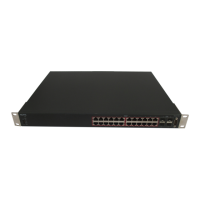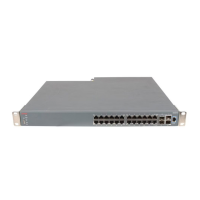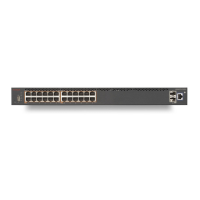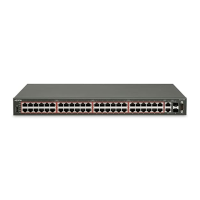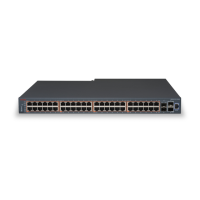– message logged when a slave unit refuses diagnostic transfer.
•
Serious: DAUR - Warning: Slave diag image check sum ERROR
– message logged when the slave announces that the checksum was wrong.
Multicast behavior
IGMP snooping is a technique whereby the switch selectively forwards multicast traffic only
onto ports where particular IP multicast streams are expected. The switch can identify those
ports by snooping for IGMP communication between routers and hosts.
After the switch learns that a client wants a particular stream, it stops flooding the stream to
all ports, and sends only to the client that requested it.
However, if no clients request the stream, and the switch has not learned the multicast address
for the stream, the stream has an unknown multicast address. The switch broadcasts the traffic
to all ports.
This is normal behavior. You can disable multicast flooding using the unknown-mcast-no-
flood enable command.
IPv6
IPv6 provides dual-stack configuration that allows both IPv4 and IPv6 protocol stacks to run
simultaneously. Release 5.7 supports IPv6 for management purposes only.
Running IPv6 is optional. Release 5.7 provides a maximum of one IPv6 interface for the
management VLAN only. The IPv6 interface must be enabled on the management VLAN and
IPv6 globally enabled on the IPv6 stack.
You can assign a maximum of one IPv6 global unicast address to the interface. The link-local
IPv6 address for the interface is automatically configured by the system, but you must configure
the default gateway.
The IPv6 protocol runs on the base unit in a stack. The ACLI commands must be issued from
the base unit console.
The Neighbor Cache replaces the IPv4 ARP cache because ICMPv6-based Neighbor
Discovery replaces ARP.
For detailed information about IPv6, see Configuring Systems on Avaya Ethernet Routing
Switch 4000 Series, NN47205-500.
Troubleshooting tools
46 Troubleshooting Avaya ERS 4000 Series April 2014
Comments? infodev@avaya.com

